

Garry Fabian Miller - Artists - Danziger Gallery. Garry Fabian Miller's earliest work explored the abstract possibilities of landscape.
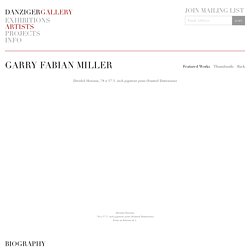
His minimal sky and seascapes of 1976 first brought him to the attention of the photography world. He has worked without a camera since 1984 and is now best known for the purity and minimalism of his darkroom abstractions. These bold experiments in light and color continue to push the boundaries of the photographic medium. Understanding ISO, Aperture and Shutter Speed. Thank you so much for the support that you have shown towards the first post of the Photography Series.

Your emails and comments on Understand and Play with Light are much appreciated and I hope I have answered all your queries. Today, we will talk about three important elements that play a vital role in making a picture. It’s a long post with lots of information and details to talk about. If you are new to this, it might take some time to understand and grasp it. When I started clicking in Manual mode, I read these details again and again for months to figure it out and I am still reading, still learning. The three key elements that work as a chemical process to create an image are ISO, Aperture and Shutter Speed. Paul Huf Award voor Ghanese fotograaf Eric Gyamfi. The Artists Turning Famous Photographs into Elaborate Dioramas. Blauwdruk Archives - Hekserij : Hekserij. DIY: cyanotype prints - tips & trucs. Perfect voor een nazomerse dag: je eigen blauwdrukken maken.
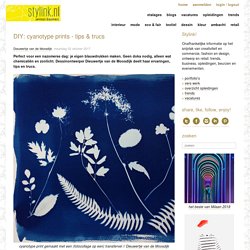
Geen doka nodig, alleen wat chemicaliën en zonlicht. Dessinontwerper Dieuwertje van de Moosdijk deelt haar ervaringen, tips en trucs. Blauwer dan blauw: cyanotypie · Lomography. Through the Lens of Photographer Tom Hegen. Le photographe allemand résidant à Munich ne cesse de nous impressionner grâce à ses clichés pris du ciel et sa précision à rendre justice à la richesse de la Terre.
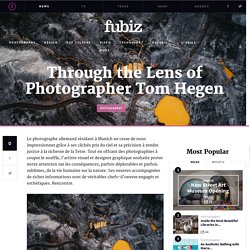
Tout en offrant des photographies à couper le souffle, l’artiste visuel et designer graphique souhaite porter notre attention sur les conséquences, parfois déplorables et parfois sublimes, de la vie humaine sur la nature. Ses oeuvres accompagnées de riches informations sont de véritables chefs-d’oeuvre engagés et esthétiques. Rencontre. Beautiful Understated Architectural Photography. I look at the mirror7. De werkelijkheid is een schaduw. Why Aperture Priority Mode Isn't Always the Best Choice. A Post By: James Maher There are a lot of common mistakes to make in photography, but possibly the most frequent is to shoot in Aperture Priority mode when it’s not the best choice.

There are many situations where shooting in Aperture Priority is ideal, such as when you are using a tripod and your shutter speed does not matter, when you are in strong sunlight, when you are shooting a scene with a wide-angle lens and nothing is moving, or when you want a very shallow depth of field for aesthetic purposes. However, in most other situations it is beneficial to shoot in Shutter Priority mode (or manual mode). Lamborghini, SoHo – Shutter Speed priority can be much more effective for Street Photography, where spontaneous shots occur frequently, and freezing motion is very important. 7 Valuable Insights You Can Learn About Street Photography From this Garry Winogrand Interview - Eric Kim Street Photography Blog. Garry Winogrand is one of my favorite street photographers of all-time.

Sure, he hated the term “street photographer” and didn’t call himself one — but his contagious energy, love of the streets, and powerful imagery is what draws a lot of street photographers to him. In the video above produced by Michael Engler, Winogrand shoots the streets of LA and shares some of his philosophies when it comes to street photography. Watch the video above or read a transcript that I put together below and some of my thoughts on what we as street photographers can learn from him. 1.
On inspirations “I think the photographers who I feel that I learn the most from—most immediately I feel most responsible to, are Walker Evans and Robert Frank.” 3 Ways to Guarantee Good Exposures. A Post By: Anne McKinnell There is no excuse for coming home from a photo shoot to discover that your images are over or under exposed.

Your camera’s light meter will guide you to choose the right aperture and shutter speed settings to get a good exposure, or it will choose them automatically if you are using the automatic or semi-automatic modes. The problem is that your camera can be fooled by tricky lighting situations and that’s why your image may not come out exactly the way you want it, despite all the advanced technology in your camera. 10 Things Henri Cartier-Bresson Can Teach You About Street Photography - Eric Kim Street Photography Blog. Don’t forget to pre-order the new re-print of “The Decisive Moment” by Henri Cartier-Bresson!

Humanfubiz7. Experimental Photos Similar to Abstract Paintings. 04#14b Berlin, Potsdamer Platz III (1998) 12 Lessons Trent Parke Has Taught Me About Street Photography – Eric Kim. All photographs in this article are copyrighted by Trent Parke / Magnum Photos.
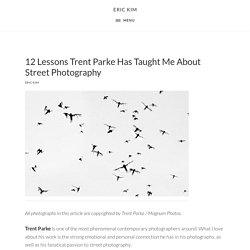
Trent Parke is one of the most phenomenal contemporary photographers around. What I love about his work is the strong emotional and personal connection he has in his photographs, as well as his fanatical passion to street photography. One of his seminal books, “Minutes to Midnight” recently got republished– and I wanted to write an article on Parke, and how he has inspired my street photography. 1. Look for the light “I am forever chasing light. One of the most stirring things you see about Parke’s work is the breath-taking light he captures.
And it is certainly light what makes ordinary photographs extraordinary. Takeaway point: One of the mistakes I see a lot of street photographers starting off is that they don’t pay enough attention to the light. So when you are out shooting in the streets, don’t just think about your subjects and the background. Playful Aerial Shots by Sebastien Staub. Junichi Hakoyama. Why Every Photographer Should Use a Manual Focus Lens. Your camera is smart.
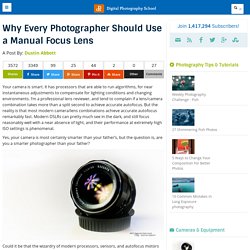
It has processors that are able to run algorithms, for near instantaneous adjustments to compensate for lighting conditions and changing environments. I’m a professional lens reviewer, and tend to complain if a lens/camera combination takes more than a split second to achieve accurate autofocus. But the reality is that most modern camera/lens combinations achieve accurate autofocus remarkably fast. Yourshot.nationalgeographic. How to Get a Perfectly Lit Photo with One On-Camera Flash. Quality multi-light setups can be quite expensive, yet without them it can be challenging to get the highlights and fill we’re looking for in a quality studio shot. In the video below, photographer Pyre Jirsa demonstrates how to get a great the multi-light look with just a few light modifiers and an on-camera flash: The main gist of Jirsa’s technique is the bounce flash—bouncing a single flash into a modifier (or three) to light up the subject from multiple directions. You can control the brightness of your modifiers by using different colors—silver for brighter and white for softer and less bright.
You can even balance out the overall brightness by combining a softer (white) primary reflector with a brighter (silver) secondary. One Light Setup In the image below, the light from coming from the viewer’s left side is almost exclusively from the primary modifier (a silver reflector). Portrait Using One Light and Multiple Modifiers.
Video: How to Clean Your Camera Sensor to Remove Dust Spots. When particles of dust and debris get on your camera sensors, they can cause frustrating spots in your shots that ruin entire batches of photographs. Thus, many photographers like to regularly give their sensor a cleaning to make sure it’s free of spots. In the 10-minute video above, PhotoRec Toby offers a detailed look at how you should go about dry and wet cleaning your image sensor. Toby begins by showing us exactly how dirty his Sony a7R’s sensor became after a recent photo trip to Iceland. 6 Tips for Taking Better Natural Light Classic Portraits. On now until September 22nd (2015) over on Snapndeals – 20% OFF Wayne’s eBooK – Portrait Tips and Techniques: Natural Light Black & White Portraiture.
Grab it before the deal expires. Many photographers choose to use natural light as their chosen style, almost as a badge of honour. Maximizing Depth of Field Without Diffraction. So you are out shooting and you want to capture the full scene in front of you – all the way from what is directly in front of you to the background way off in the distance. You know you need a really large depth of field, and you know what you need to do to get it. You reach for the camera’s aperture control and crank it down all the way to f/22 (or f/32 if your lens allows).
That will maximize your depth of field and have your picture looking sharp from front to back. 10 Historic Women Photographers You Should Know. Photographer Creates the World's Largest Negative. After hearing that a hundred-year-old building was soon to be demolished in downtown Vancouver, artist Joel Nicholas Peterson had an idea: why not give the building one last hurrah by turning it into one of the world’s largest “disposable” cameras? Peterson did just that, drilling 1/8-inch holes in the four walls of the building facing north, south, east, and west. He used the resulting camera obscura to shoot photos on the world’s largest film negatives for a project titled “Blueprints for Observation.” Peterson’s photos were created by exposing giant lithographic film, which were then developed using sprayers. Once the negatives were created, Peterson used them to make cyanotype contact prints. The 14 ultra-large format photos form a near 360-degree view of the city around a building that no longer exists.
Eerie photographs of abandoned mental asylums in Italy. Austrian photographer Thomas Windisch is a brave soul for visiting many of Italy's abandoned mental asylums, capturing everything that he finds. From decaying hospital beds and rusting wheelchairs to leftover tools and medical equipment – it's an eerie collection of images that wouldn't look out of place in a horror film. In fact, the more you scroll through his beautiful photographs, the more you might feel yourself going mad.
Revisiting the archives of street photography's poetic pioneer. Wilkes-Barre boasts a population of just over 40,000. It forms a fraction of northeastern Pennsylvania, a metro-region home to 560,000 people. These figures pale in comparison to the number of images photographer Mark Cohen has shot of the Rust Belt city's streets over the past five decades. He estimates there are over 800,000 negatives he's never even developed. Bandaged Boy on Bike, August 1998 Although he never fled his home town to court New York City gallerists or enroll in an MFA program, Cohen is one of street photography's poetic pioneers.
In pictures: the abandoned remains of Soviet technology. HyperCam is a Low-Cost Hyperspectral Camera That Captures What We Can't See. Hyperspectral cameras can see things in the world that the human eyes can’t by capturing information from across the electromagnetic spectrum beyond visible light. G A L E R I E S.N L. Eamonn Doyle i photobook [version 2] Artsy. Munichwalkersfromabove20. The Life and Loves of Jacques Henri Lartigue. The most famous photography masterpieces in the world. Henri cartier bresson. Henri cartier bresson. Henri cartier bresson. Henri Cartier-Bresson. History of photography. Exploring the Ruins of Rome’s Casa Sperimentale. Amusingsurrealphotographsofrussia-9.